We’re into the top ten now, and this time I’ve managed to rank the albums in order rather that just list them alphabetically. So with no further ado…
10: Rebecca Downes – Believe
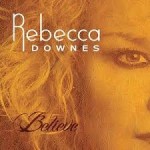 Deserved winner of Best Female Vocalist and Best Breakthrough Artist at the British Blues Awards, Rebecca Downes has a great voice, with range and power as well as emotional depth, equally at home with soulful ballads as belting out hard rockers. When combined with her talented backing band result is a hugely varied record, combining blues with hard rock, funk and soul.
Deserved winner of Best Female Vocalist and Best Breakthrough Artist at the British Blues Awards, Rebecca Downes has a great voice, with range and power as well as emotional depth, equally at home with soulful ballads as belting out hard rockers. When combined with her talented backing band result is a hugely varied record, combining blues with hard rock, funk and soul.
9: Tilt – Hinterland
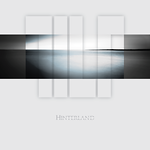 The band including Fish alumni Steve Vantis, Robin Boult and Dave Stewart deliver a hard-rocking album. The layered sound and powerful bass grooves recall Porcupine Tree and Steve Vantsis’ work with Fish.
The band including Fish alumni Steve Vantis, Robin Boult and Dave Stewart deliver a hard-rocking album. The layered sound and powerful bass grooves recall Porcupine Tree and Steve Vantsis’ work with Fish.
But Paul Dourley is a very different sort of singer; his soulful vocals have the occasional hints of Peter Gabriel and Lou Gramm, and if anything it’s his performance that lifts this record from a good one to a great one.
8: Ihsahn – Arktis
 The fiendishly inventive Norwegian black metallers reign in the avant-garde experimentalism of 2013′s Das Seelenbrechen in favour of an album of more straightforward metal songs. But “straightforward” is a relative thing for a band like Ihsahn; there’s a lot of varied creativity on display here, balancing face-melting guitars with occasional moments of atmospheric beauty,
The fiendishly inventive Norwegian black metallers reign in the avant-garde experimentalism of 2013′s Das Seelenbrechen in favour of an album of more straightforward metal songs. But “straightforward” is a relative thing for a band like Ihsahn; there’s a lot of varied creativity on display here, balancing face-melting guitars with occasional moments of atmospheric beauty,
7: Mantra Vega – The Illusion’s Reckoning
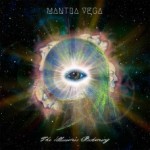 The collaboration between former Mostly Autumn singer Heather Findlay and Sound of Contact’s Dave Kerzner results in a record with a strong 70s vibe.
The collaboration between former Mostly Autumn singer Heather Findlay and Sound of Contact’s Dave Kerzner results in a record with a strong 70s vibe.
There are nods to Stevie Nicks era Fleetwood Mac and the rootsier side of Led Zeppelin, as well as the folky feel of Heather Findlay’s work with Odin Dragonfly and early Mostly Autumn. It’s an impressive work that’s as good as anything either of them have done.
6: Big Big Train – Folklore
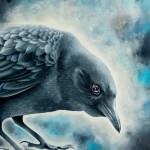 Big Big Train continue to be better than anyone else at invoking the spirit of 1970s English pastoral progressive rock. Again the lyrics are steeped in English landscapes and socio-economic history.
Big Big Train continue to be better than anyone else at invoking the spirit of 1970s English pastoral progressive rock. Again the lyrics are steeped in English landscapes and socio-economic history.
The songs cover subjects from London’s lost rivers to World War 2 RAF pigeons, with music that sometimes evokes the mood of albums like Genesis’ “Trespass”, and at other times is closer to the electric folk-rock of bands like Steeleye Span.
![[Redacted]](http://www.kalyr.co.uk/weblog/wp-content/uploads/2013/10/Redacted-150x150.jpg) Also Eden have significantly raised their game with this, their second album since Rich Harding took over as lead vocalist. Despite occasional echoes of Tangerine Dream, Porcupine Tree and even Trespass-era Genesis in the album’s quieter moments, this is a harder-edged and more rock-orientated record than their previous work. The result is powerful yet richly layered record, with Simon Rogers’ inventive guitar playing at the centre of the sound, and Rich Harding’s lyrics moving from the political to the personal.
Also Eden have significantly raised their game with this, their second album since Rich Harding took over as lead vocalist. Despite occasional echoes of Tangerine Dream, Porcupine Tree and even Trespass-era Genesis in the album’s quieter moments, this is a harder-edged and more rock-orientated record than their previous work. The result is powerful yet richly layered record, with Simon Rogers’ inventive guitar playing at the centre of the sound, and Rich Harding’s lyrics moving from the political to the personal.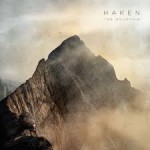 Haken are another band to step up to the next level with their third album. Previous albums had displayed some obvious influences, most notably Dream Theater and Zappa. But here, aside from a couple of nods to Gentle Giant, most noticeably on the completely bonkers “Cockroach King”, they develop a sound that’s all their own. There are metal riffs, church-like vocal harmonies, deep and complex arrangements and recurring motifs, resulting in a record that both progressive in every sense of the word, and very contemporary sounding at the same time.
Haken are another band to step up to the next level with their third album. Previous albums had displayed some obvious influences, most notably Dream Theater and Zappa. But here, aside from a couple of nods to Gentle Giant, most noticeably on the completely bonkers “Cockroach King”, they develop a sound that’s all their own. There are metal riffs, church-like vocal harmonies, deep and complex arrangements and recurring motifs, resulting in a record that both progressive in every sense of the word, and very contemporary sounding at the same time. It was indeed a surprise when Mostly Autumn’s keyboard player released a solo album with very little fanfare early in the year. It’s a concept album with lyrics by vocalist Mark Chatterton, and guest appearances from Mostly Autumn’s Liam Davison amongst others. With its mix of hard rock and atmospheric ballads with touches of electronica it has many familiar ingredients, but it’s all put together in a different way and avoids sounding anything like a repeat of Iain’s earlier work. The way it seamlessly blends a lot of different styles demonstrates his skills as a composer and arranger. A dark surprise indeed, but a very pleasant one.
It was indeed a surprise when Mostly Autumn’s keyboard player released a solo album with very little fanfare early in the year. It’s a concept album with lyrics by vocalist Mark Chatterton, and guest appearances from Mostly Autumn’s Liam Davison amongst others. With its mix of hard rock and atmospheric ballads with touches of electronica it has many familiar ingredients, but it’s all put together in a different way and avoids sounding anything like a repeat of Iain’s earlier work. The way it seamlessly blends a lot of different styles demonstrates his skills as a composer and arranger. A dark surprise indeed, but a very pleasant one. Ihsahn’s last couple of albums have been ideal for anyone missing Opeth from the time before Mikael Akerfeldt abandoned the cookie monster. But this album sees Ihsahn leave Black Metal behind, setting course for far stranger waters. There are still moments of ambitious prog-metal especially on the first half of the record, but this album also takes in avant garde noise, with storms of clattering percussion and passages of spooky atmospherics. It’s by no means an easy listen, but it does show how the more experimental end of metal can be far more progressive than many an act labelled as “prog”.
Ihsahn’s last couple of albums have been ideal for anyone missing Opeth from the time before Mikael Akerfeldt abandoned the cookie monster. But this album sees Ihsahn leave Black Metal behind, setting course for far stranger waters. There are still moments of ambitious prog-metal especially on the first half of the record, but this album also takes in avant garde noise, with storms of clattering percussion and passages of spooky atmospherics. It’s by no means an easy listen, but it does show how the more experimental end of metal can be far more progressive than many an act labelled as “prog”.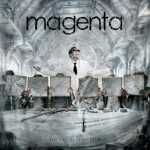 When it comes to old-school neo-prog, Magenta are still one of the best bands in the business. They’ve never denied their strong Yes influence. There are some very Steve Howe like phrases from guitarist Chris Fry, and Christina Booth often sings in similar register to Jon Anderson. although her performances have a lot more emotional depth. Their sixth album takes a position midway between the dark intensity of “Metamorphosis†and the commercial Magenta-lite of “Chameleonâ€. As a distillation of a lot of what’s good about Magenta’s music it makes a very good starting point for new listeners.
When it comes to old-school neo-prog, Magenta are still one of the best bands in the business. They’ve never denied their strong Yes influence. There are some very Steve Howe like phrases from guitarist Chris Fry, and Christina Booth often sings in similar register to Jon Anderson. although her performances have a lot more emotional depth. Their sixth album takes a position midway between the dark intensity of “Metamorphosis†and the commercial Magenta-lite of “Chameleonâ€. As a distillation of a lot of what’s good about Magenta’s music it makes a very good starting point for new listeners.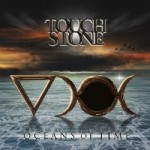 Touchstone’s fourth album sees something of a change of direction, with vocalist Kim Seviour and guitarist Adam Hodgson taking on a bigger share of the writing. The result is an album with a greater emphasis on songwriting rather than prog-metal instrumental workouts, and a rawer stripped-down sound with a lot more light and shade that gives Kim’s vocals space to breathe without being swamped by the instrumentation. With their most mature album to date they deserve to win themselves a much larger audience with this release.
Touchstone’s fourth album sees something of a change of direction, with vocalist Kim Seviour and guitarist Adam Hodgson taking on a bigger share of the writing. The result is an album with a greater emphasis on songwriting rather than prog-metal instrumental workouts, and a rawer stripped-down sound with a lot more light and shade that gives Kim’s vocals space to breathe without being swamped by the instrumentation. With their most mature album to date they deserve to win themselves a much larger audience with this release.